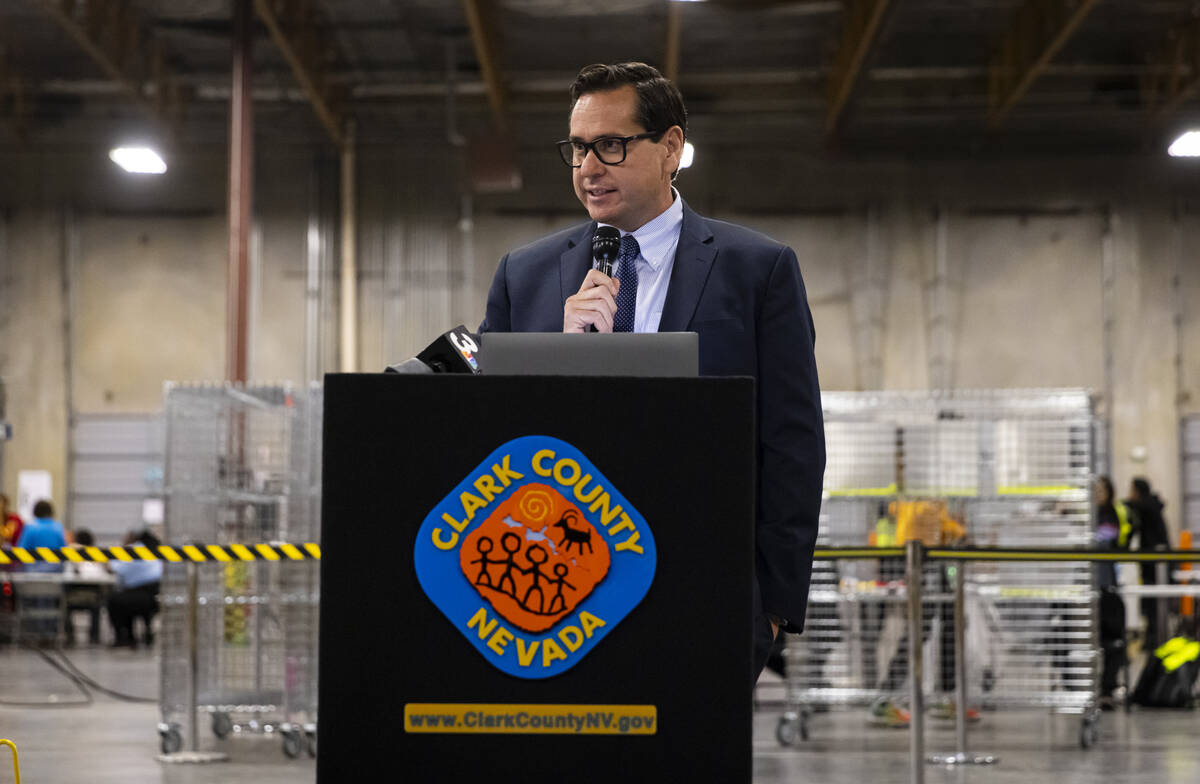More than 14,000 Nevada ballots need to be cured. Here’s what that means

Although winners have been determined in some Nevada races, others are too close to call — and the results could come down to several thousand ballots that need voter verification.
As of late Thursday morning, 14,388 ballots across the state need to be “cured,” or verified by a voter due to a discrepancy in their signature. Clark County accounted for 12,166 of the ballots needing signature cures, according to data from the secretary of state’s office.
“We are a battleground state and races could be close up and down the ballot — every eligible Nevada voter deserves to have their vote counted and voice heard, and signature verification is an important security check in the voting process,” said Secretary of State Cisco Aguilar in a statement.
Both political parties in Nevada, as well as election officials, are reaching out to voters marked as needing their signatures cured in an effort to get those ballots counted.
On Election Night, Democratic Sen. Jacky Rosen encouraged supporters to knock on doors and get voters to cure their signatures.
“Democrats have already started helping Nevadans cure their ballots so they can make sure their voices are heard and their votes are counted in this critical election,” said Tai Sims, Nevada State Democratic Party communications director, in a statement.
The Nevada Republican Party has also been actively calling, door knocking and texting voters who have been marked as needing their ballot to be cured throughout the electoral process, according to a Nevada GOP official.
“We continue to do so until the cure deadline of the 12th,” the official said. “We are making sure that every voter has their voice heard and their ballot cast.”
Here’s what you need to know about signature cures.
Who determines a signature needs curing and which ballots need cured?
A bipartisan team of election workers who go through forensic signature verification training determine whether a ballot needs to be cured.
The curing process pertains only to mail ballots, as when a voter goes to vote in person, signature verification is used by a poll worker to identify the voter during the check-in process. A voter signs their name in the roster or on a signature card, and a poll worker verifies the signature against the image of their signature from their voter registration application, according to the secretary of state’s office.
On returned mail ballot envelopes, signatures are checked against all signatures of a voter available in the voter’s record, according to the secretary of state’s office.
The county clerk must perform periodic audits of each employee in the office of the county clerk whose regular duties include checking signatures on ballots. If the clerk finds the employee has an irregular acceptance or rejection rate, the clerk must retrain the employee or prohibit them from continuing to perform signature verification.
What sort of discrepancies makes curing necessary?
The usual discrepancies are if a voter fails to sign their return envelope, or if their signature doesn’t match what’s on record. If at least two of the election officials believe there is a “reasonable question of fact” as to whether the signature belongs to the voter, the clerk will contact the voter and ask for confirmation of their signature.
A reasonable question of fact happens “if the signature used for the mail ballot differs in multiple, significant and obvious respects from the signatures of the available in the records of the clerk.”
What do election officials look at when determining a signature doesn’t match?
When comparing signatures, the employees study characteristics like line quality, such as the thickness, strength and flow of the lettering. They also look at flowing, shaky, thick or thin lettering, letter spacing, pen lifts, pauses, slants, and the height, width and size of the letters.
Both cursive and print signatures are accepted, according to the secretary of state’s office.
How do you know if your ballot needs to be cured?
Election officials should also be in touch with you. If the department doesn’t have your contact information, check VOTE.NV.gov. Also check your mail for a notice from officials.
How do you cure your signature?
Visit Cure.NV.gov or call 702-455-6552.
There’s a few options voters can take to verify their identity with a poll worker, according to the secretary of state’s office. They can answer questions from the election board officer covering the personal data reported on the application to register to vote. They can also provide other personal data orally or in writing, or provide the election board officer with proof of ID.
Contact Jessica Hill at jehill@reviewjournal.com. Follow @jess_hillyeah on X.